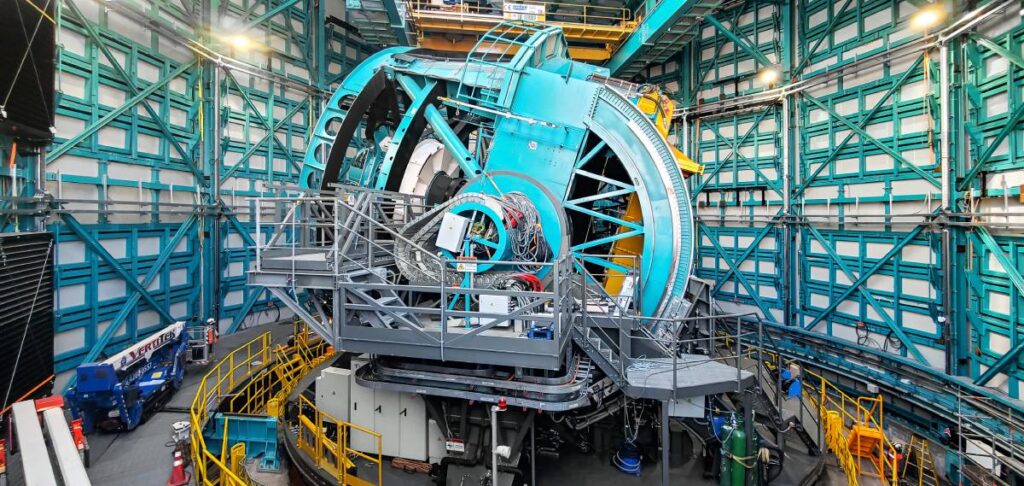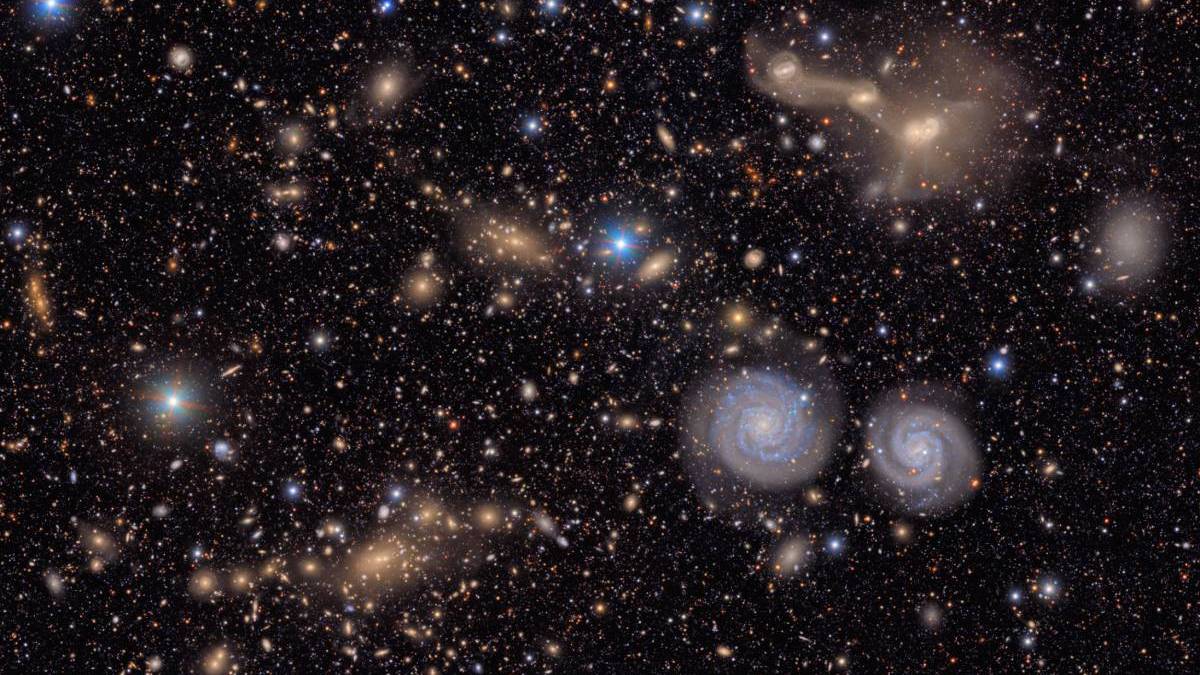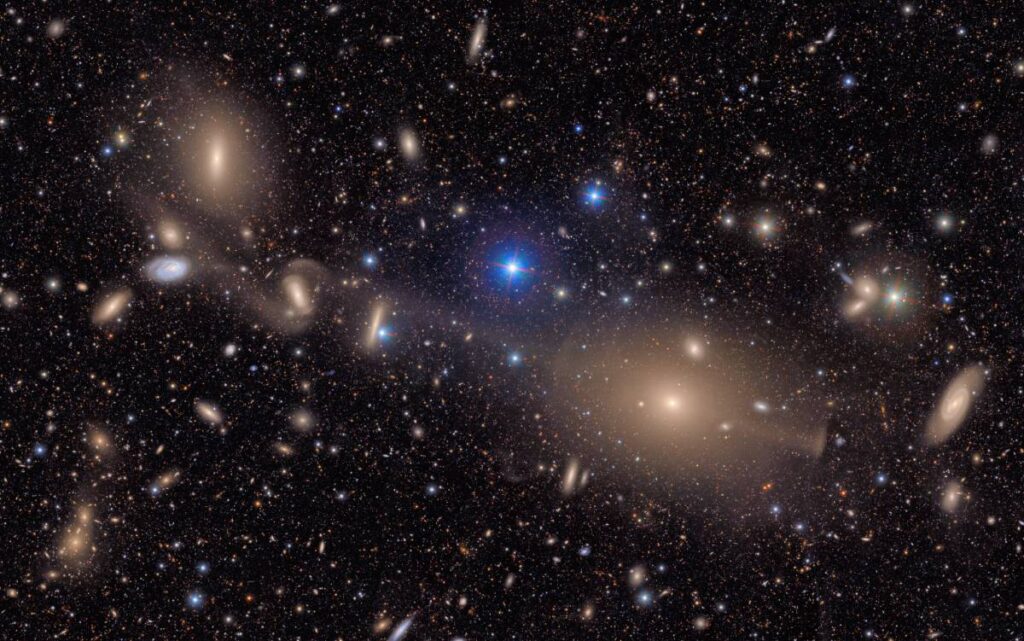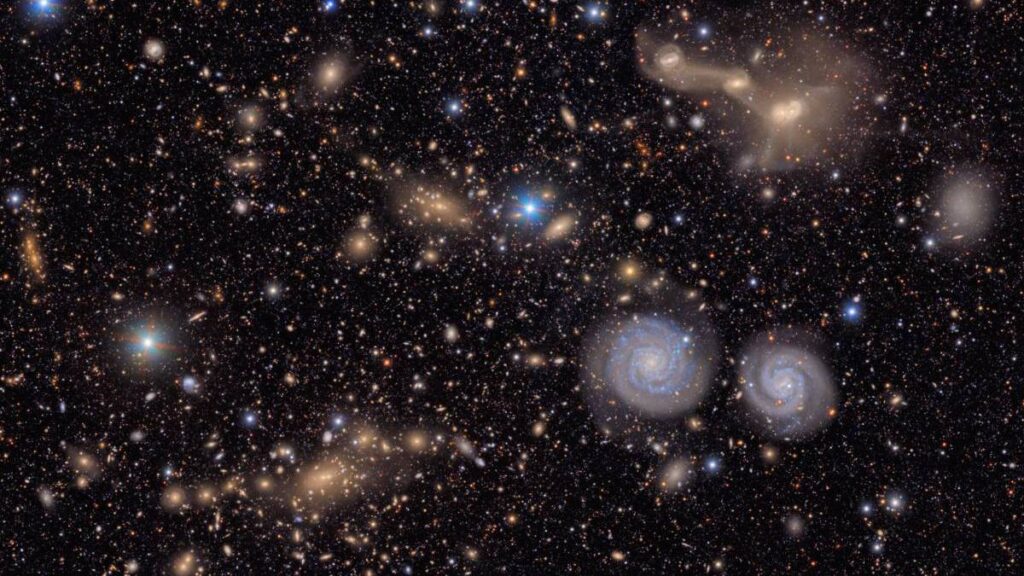Research & Developments is a blog for brief updates that provide context for the flurry of news that impacts science and scientists.
Astronomy is a field of temporal extremes. Some phenomena—the birth of stars, the ballet of galaxies within clusters, the growth of the Universe—take place over millions or billions of years, timescales too vast for the human mind to easily comprehend. Other events can happen in quick bursts that take you by surprise: Asteroids and comets flash by, a star goes supernova, pulsar beams sweep past at dizzying speeds, an exoplanet whips around a star in just a few hours.
The Vera C. Rubin Observatory is designed to watch it all.
The telescope, funded by the National Science Foundation and U.S. Department of Energy, has been 3 decades in the making, and it just released its first science images. Taken by a digital camera the size of a car in just over 10 hours of test observations, these images captured millions of galaxies and Milky Way stars and thousands of solar system asteroids.
The first look is…wow. Just wow. Take a look:
Named after pioneering dark matter astronomer Vera C. Rubin, the telescope has a 10-year primary mission during which it will create a wide-frame, ultra-high definition time-lapse record of the Universe.
From its perch atop Cerro Pachón in Chile, it will take thousands of images of the Southern Hemisphere sky every night and map the trajectories of millions of asteroids, comets, and interstellar objects in the solar system, enhancing planetary defense efforts. It will record the locations, distances, and brightness changes in distant supernovae, allowing for more precise calculations of the expansion rate of the Universe and deepening our understanding of mysterious dark matter and dark energy. And it might even help conclusively determine whether, and where, a large planet lurks in the far reaches of our own solar system.
And that’s just what we expect to see. Most scientists would say that the most exciting discoveries are the ones that they never even thought of before, the “unknown unknowns.” Humanity has never had a telescope quite like this one, and gosh, we just can’t wait to see what amazing discoveries are just around the corner!

—Kimberly M. S. Cartier (@astrokimcartier.bsky.social), Staff Writer
These updates are made possible through information from the scientific community. Do you have a story idea about science or scientists? Send us a tip at [email protected].





